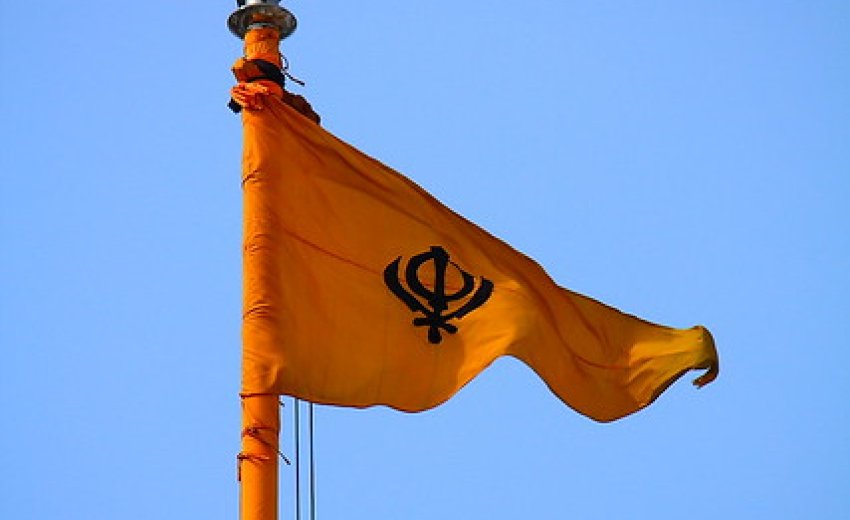

The Nishan Sahib – the flag that stands for Sikh courage and faith

The Nishan Sahib is more than a flag – it’s a living symbol of Sikh identity, dignity and solidarity. When you see that saffron (or sometimes navy) triangle fluttering outside a gurdwara, it’s announcing something simple and powerful: here is a place of refuge, service and spiritual strength.
A story of courage
There’s a famous story that shows how deeply Sikhs have always respected the Nishan Sahib. During the Second Battle of Anandpur, a brave man named Bhai Alam Singh was carrying the flag when he was captured by Mughal forces. The commander demanded he drop it. Bhai Alam Singh refused, saying the flag represented his own dignity and that of his Guru – he would not let it fall for any reason. When threatened with violence, he answered with courage: if they cut off his hands, he would hold the flag with his feet; if they cut his legs, he’d hold it in his teeth. Even when the commander threatened his life, Bhai Alam Singh said that as long as he lived he would keep the flag aloft.
The commander broke the old code of war and executed him. Before the flag could touch the ground, however, Sahibzada Baba Ajit Singh Ji – son of Guru Gobind Singh Ji – is said to have seized the Nishan Sahib and raised it high again, striking down the enemy commander. Whether told as history or legend, this tale captures how the Nishan Sahib has long stood for unshakable devotion and the willingness to protect what is sacred.
What the Nishan Sahib looks like
The Nishan Sahib is typically a triangular flag made of cotton or silk, most commonly seen in a bright saffron or deep blue. It flies from a tall pole draped in matching cloth and is topped with the Khanda – the emblem of Sikhism made up of a double-edged sword in the centre, a circular chakkar, and two single-edged kirpans on either side. That symbol alone speaks of balance: spiritual wisdom, unity, and readiness to defend justice.
What it stands for
The Nishan Sahib declares three things at once: presence, protection and principle. It marks a gurdwara as a place where everyone is welcome and where the community will help the needy. It signals a commitment to values – honesty, equality, compassion, courage and service – and it reminds Sikhs to live those values with integrity.
Many Sikhs also read inscriptions on flags historically – phrases like “Waheguru Ji Ki Fateh” (Victory belongs to God) and, in some periods, “Akal Sahai” (the Timeless One helps). These words further underline the spiritual trust behind the flag.
Rituals and care
Traditionally, the Nishan Sahib is renewed each year: the old flag is respectfully lowered and a new one hoisted, often during the Vaisakhi celebrations in April. The flagpole and its cloth are cared for with ritual attention – they’re not just functional objects but respected emblems of the community’s commitment.
At the Akal Takht in Amritsar, you’ll notice two Nishan Sahibs near the complex: one a little shorter than the other. Ceremonial details like this carry symbolic meaning – reminding worshippers that spiritual authority and worldly duty are both part of Sikh life.
Why it matters today
To stand beside a Nishan Sahib is to stand beside a promise – a community saying: we will welcome you, we will serve you, and we will stand up for justice. Its color, its symbol, and the stories told about its protection all help bind past and present into a shared sense of purpose. Whether you know the legends or simply feel the calm that comes from seeing the flag fly, the Nishan Sahib remains a powerful, living sign of faith and courage.